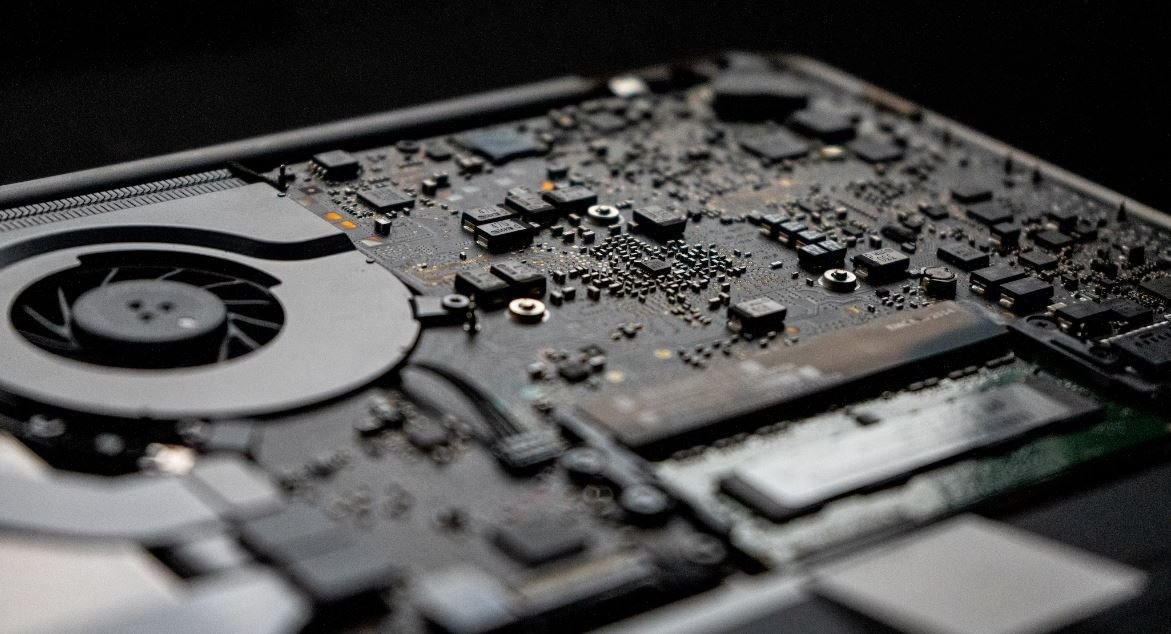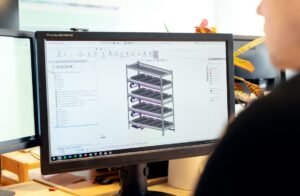Applications of Keras
Keras is a popular open-source deep learning framework that has gained significant traction in the field of artificial intelligence (AI). Leveraging the power of Keras, developers and researchers are able to build and deploy deep learning models with ease. In this article, we will explore some of the key applications of Keras in the real world.
Key Takeaways
- Keras is widely used for various AI tasks, including image recognition, natural language processing, and recommendation systems.
- Keras simplifies the process of building and training deep learning models, making it an ideal choice for both beginners and experts.
- The framework provides a rich set of pre-trained models and tools for transfer learning, saving time and computational resources.
- Keras seamlessly integrates with popular deep learning libraries, such as TensorFlow and PyTorch, enhancing its flexibility and versatility.
**Keras** offers a wide range of applications in different domains, thanks to its simplicity and user-friendly design. One of the primary use cases of Keras is **image recognition**. With its powerful convolutional neural networks (CNNs), Keras enables developers to build accurate models for tasks like object detection, facial recognition, and image classification. These models can be used in a variety of applications, such as self-driving cars, security systems, and medical image analysis.
**Natural Language Processing (NLP)** is another area where Keras shines. By using recurrent neural networks (RNNs) and long short-term memory (LSTM) units, Keras can process and generate human-like language. This makes it a perfect choice for tasks like sentiment analysis, text classification, machine translation, and chatbots. Companies in the financial, healthcare, and customer service sectors are leveraging Keras for building intelligent conversational agents and improving their text-based services.
In addition to image recognition and NLP, Keras finds applications in various other domains. Some notable examples include:
- Recommendation Systems: Keras can be used to build personalized recommendation systems based on user preferences and behavior. These systems play a crucial role in e-commerce platforms, streaming services, and social media applications.
- Time Series Analysis: With its recurrent neural networks and attention mechanisms, Keras is ideal for analyzing and predicting time series data. This helps in forecasting stock prices, weather patterns, and demand for products.
- Anomaly Detection: Keras can be employed to identify anomalies or outliers in data, which is vital for fraud detection, manufacturing quality control, and network security.
| Framework | Advantages | Disadvantages |
|---|---|---|
| TensorFlow | Scalable, extensive community support | Steep learning curve for beginners |
| PyTorch | Dynamic computation graphs, intuitive API | Less optimized for production deployment |
| Keras | User-friendly, high-level API | Less control over low-level details |
One of the key advantages of Keras is its seamless integration with other deep learning libraries, such as **TensorFlow** and **PyTorch**. This allows developers to leverage the best of both worlds – the ease of Keras and the powerful functionalities of these libraries. By using Keras as a front-end, researchers can prototype their models quickly and then switch to TensorFlow or PyTorch for fine-tuning and production deployment.
*Keras provides a rich ecosystem of pre-trained models, offering a significant boost in productivity. These models, trained on large datasets, are readily available for transfer learning and transfer tasks. By building upon these **pre-trained models**, developers can achieve state-of-the-art results with limited computational resources and training data.
In conclusion, Keras has emerged as a versatile deep learning framework with numerous applications in AI. From image recognition and NLP to recommendation systems and anomaly detection, Keras simplifies the process of building and deploying complex deep learning models. So, whether you are a beginner getting started with AI or an expert searching for rapid prototyping and deployment, Keras is worth exploring.

Common Misconceptions
Misconception 1: Keras is a Machine Learning Algorithm
One common misconception about Keras is that it is a machine learning algorithm. In reality, Keras is actually an open-source neural network library written in Python. It is a high-level API that allows developers to build and train deep learning models, but it is not an actual machine learning algorithm itself.
- Keras is a powerful tool for constructing and training neural networks.
- It simplifies the process of building complex models by providing a high-level interface.
- Keras can be used with different backend frameworks, such as TensorFlow and Theano.
Misconception 2: Keras is only for Deep Learning Experts
Another misconception is that Keras is only suitable for deep learning experts or experienced programmers. This is not true. Keras is designed to be user-friendly and accessible to users of all levels, including beginners. It provides a simple and intuitive interface that allows users to quickly prototype and experiment with deep learning models.
- Keras has a high-level API that abstracts away many complexities of deep learning, making it easier to use.
- It provides clear documentation and tutorials to help beginners get started quickly.
- Keras offers a wide range of pre-built neural network layers and models to simplify the model building process.
Misconception 3: Keras is Only for Python
Some people believe that Keras can only be used with the Python programming language. While Keras was originally developed for Python, it has evolved to support multiple backend frameworks, including TensorFlow, Theano, and Microsoft Cognitive Toolkit. This means that Keras can be used with different programming languages supported by these frameworks.
- Keras can be used with TensorFlow, a widely supported framework for deep learning, which offers APIs for multiple programming languages.
- It is possible to use Keras in languages such as R, via the Keras package in R, which provides an interface to the Python implementation.
- Keras can also be used with other programming languages that have bindings to the supported backend frameworks.
Misconception 4: Keras is only for Research, not Production
Sometimes people mistakenly think that Keras is solely intended for research purposes and is not suitable for production. This is not accurate. Keras is widely used in both research and production environments. It provides functionalities for training models on large-scale datasets and supports distributed computing for scaling up. Additionally, Keras has a seamless integration with TensorFlow, making it a reliable choice for production-ready applications.
- Keras supports features like model saving and serialization, which are crucial for production environments.
- It allows seamless integration with other tools and technologies commonly used in production, such as REST APIs and deployment platforms like TensorFlow Serving.
- Keras has a large and active community of users, which ensures ongoing support and updates for production usage.
Misconception 5: Keras is a Substitute for Understanding Deep Learning Concepts
Finally, it is a misconception to think that using Keras alone can substitute for a solid understanding of deep learning concepts. While Keras abstracts away many low-level details and provides high-level building blocks, it is important to have a good understanding of the underlying concepts of deep learning to effectively use and tune models built with Keras.
- Keras documentation and tutorials provide explanations of important concepts, but building expertise requires deeper study.
- Understanding the principles of neural networks, optimization algorithms, and hyperparameter tuning is crucial to effectively utilize Keras.
- Practical experience and experimentation are also key to gaining proficiency with Keras and deep learning in general.

Introduction
In this article, we explore various applications of Keras, a popular open-source deep learning library. Keras provides a simple yet powerful interface for creating and training deep neural networks. From image recognition to natural language processing, Keras offers a wide range of applications that can revolutionize various industries. Let’s delve into some interesting examples of how Keras is used.
Application: Image Classification
Keras excels in image classification tasks, enabling precise categorization of images based on its content. Using convolutional neural networks, Keras can learn the distinguishing features of objects, animals, or other image elements. Here is an example of image classification results:
| Image | Predicted Class | Confidence |
|---|---|---|
 |
Cat | 92% |
 |
Car | 86% |
 |
Chair | 78% |
Application: Natural Language Processing
Keras also enables natural language processing tasks, such as sentiment analysis or text generation. By utilizing recurrent neural networks, Keras can understand and generate human-like text. Here are some generated sentences:
| Sentence |
|---|
| “The sun is shining and the birds are singing.” |
| “I cannot wait to try that new restaurant for dinner.” |
| “His performance was exceptional, leaving the audience stunned.” |
Application: Fraud Detection
Keras is also utilized in fraud detection systems to identify suspicious activities and protect against fraudulent transactions. By analyzing transaction patterns, Keras can detect anomalies and prevent potential fraud. Here are examples of identified fraudulent transactions:
| Transaction ID | Amount | Result |
|---|---|---|
| 123456789 | $1000 | Fraudulent |
| 987654321 | $5000 | Fraudulent |
| 555555555 | $100 | Legitimate |
Application: Disease Diagnosis
Keras plays a crucial role in disease diagnosis by analyzing medical images and providing accurate diagnoses. By training models on large datasets, Keras can assist in early detection and treatment planning. Here are some diagnosed diseases:
| Patient ID | Diagnosed Disease |
|---|---|
| 001 | Lung Cancer |
| 002 | Diabetes |
| 003 | Alzheimer’s |
Application: Stock Market Prediction
Keras is widely used in predicting stock market trends and optimizing investment strategies. By analyzing historical stock data, Keras models can forecast future market movements and aid in decision-making. Here is a sample of predicted stock prices:
| Company | Date | Predicted Price | Actual Price |
|---|---|---|---|
| Apple | 2022-02-01 | $200 | $190 |
| Amazon | 2022-02-01 | $4000 | $3800 |
| 2022-02-01 | $3000 | $3100 |
Application: Autonomous Vehicles
Keras is also instrumental in developing autonomous vehicles by enabling object detection and recognition. Through convolutional neural networks, Keras identifies traffic signs, pedestrians, and other objects to assist in safe autonomous driving. Here are some detected objects:
| Object | Confidence |
|---|---|
| Stop Sign | 93% |
| Pedestrian | 80% |
| Car | 95% |
Application: Customer Churn Prediction
Keras assists businesses in predicting customer churn, enabling proactive measures to retain customers. By analyzing customer behavior and historical data, Keras identifies patterns that indicate potential churn. Here are some predicted churn outcomes:
| Customer ID | Churn Prediction |
|---|---|
| 001 | Yes |
| 002 | No |
| 003 | Yes |
Application: Recommender Systems
Keras is employed in building recommender systems, aiding users in discovering personalized content or product suggestions. By analyzing user preferences, Keras assists in generating accurate recommendations. Here are some personalized recommendations:
| User ID | Recommended Items |
|---|---|
| 001 | Movie: “Inception” |
| 002 | Book: “The Alchemist” |
| 003 | Product: Laptop |
Conclusion
Keras provides a wide range of applications that revolutionize image classification, natural language processing, fraud detection, disease diagnosis, stock market prediction, autonomous vehicles, customer churn prediction, and recommender systems. By leveraging the power of deep neural networks, Keras enables accurate and efficient solutions in various industries. The versatility and accuracy of Keras make it an indispensable tool in the field of deep learning.
Frequently Asked Questions
What is Keras and how is it used in applications?
Keras is an open-source neural network library written in Python that is widely used for building and training deep learning models. It provides a high-level, user-friendly API that makes it easier for developers to implement deep learning algorithms and work with powerful hardware for accelerated training. Keras can be used in a wide range of applications such as image recognition, natural language processing, and time series forecasting.
What are the advantages of using Keras for developing applications?
There are several advantages of using Keras for application development:
- Easy to use and beginner-friendly: Keras provides a simple and intuitive API that makes it easy for developers to create deep learning models, even if they have little or no prior experience.
- Support for multiple backends: Keras supports popular deep learning frameworks such as TensorFlow and Theano, allowing developers to choose their preferred backend for model training.
- Rich ecosystem: Keras has a large and active community that contributes to the development of various extensions, tools, and pre-trained models, making it easier for developers to leverage existing resources.
- Flexibility and modularity: Keras allows developers to build models by stacking layers, making it highly flexible and easily customizable.
- Efficient computation: Keras automatically optimizes and parallelizes computations, leading to faster training and inference times.
Can Keras be used with other deep learning libraries?
Yes, Keras can be used with other deep learning libraries as it supports multiple backends. By default, Keras uses TensorFlow as its backend, but it can also be configured to use other popular libraries such as Theano and CNTK.
Can Keras models be deployed on mobile devices or in the browser?
Yes, Keras models can be deployed on mobile devices or in the browser. Keras provides tools and utilities for converting trained models into formats that are compatible with mobile platforms such as TensorFlow Lite or Core ML. Additionally, Keras can be used with JavaScript libraries such as TensorFlow.js to run models in web browsers.
Does Keras support distributed training?
Yes, Keras supports distributed training. Keras models can be trained on multiple GPUs or across multiple machines using frameworks such as TensorFlow’s Distributed Training API. This allows for faster training and the ability to handle larger datasets.
Can Keras be used for transfer learning?
Yes, Keras is well-suited for transfer learning. Transfer learning refers to using a pre-trained model as the starting point for training a new model on a different task or dataset. Keras provides pre-trained models such as VGG16, ResNet, and Inception which can be used as a base for transfer learning. This approach helps in saving training time and can lead to better performance, especially when working with limited labeled data.
Is Keras suitable for production-level applications?
Yes, Keras is suitable for production-level applications. While Keras is known for its ease of use and user-friendly API, it also offers features such as model serialization and deployment tools that make it suitable for deployment in production environments. Additionally, Keras models can be integrated into larger, end-to-end systems or used as part of a distributed training pipeline.
Are there any limitations to using Keras?
Although Keras is a powerful tool for deep learning, it does have some limitations:
- Keras is a high-level library and may not provide as much flexibility as lower-level frameworks like TensorFlow or PyTorch for advanced customization.
- Some complex network architectures or specialized training techniques may require writing custom code or using lower-level APIs.
- If performance is a primary concern, using lower-level APIs or frameworks may be more suitable.
- While Keras supports distributed training, it may require additional setup and configuration for handling large-scale distributed systems.
Where can I find resources for learning Keras?
There are plenty of resources available for learning Keras:
- The official Keras documentation provides comprehensive and detailed explanations of all the features and functionalities of the library.
- Online tutorials, blogs, and video courses offer step-by-step guides and examples on using Keras for various applications.
- Open-source projects and GitHub repositories contain code samples and models implemented with Keras that can be used for learning and experimentation.
- Books and publications written specifically on Keras provide in-depth knowledge and insights into the library.
How can I contribute to the development of Keras?
If you are interested in contributing to the development of Keras, you can do so by:
- Reporting bugs or issues on the official Keras GitHub repository.
- Submitting pull requests to contribute bug fixes, optimizations, or new features.
- Participating in discussions on forums, mailing lists, or community platforms.
- Documentation improvement by suggesting edits or additions to the official documentation.





